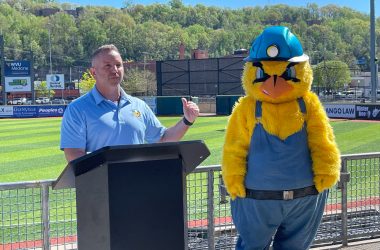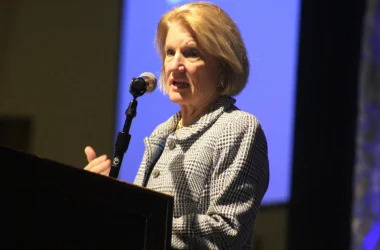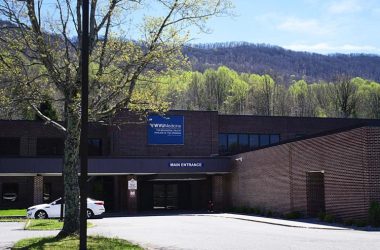By BISHOP NASH
The Herald-Dispatch
HUNTINGTON, W.Va. — While it’s become almost a national civic duty to “remember” the Japanese attack on Pearl Harbor — now 76 years ago — fewer each year remain who physically remember the date “which will live in infamy.”

(Herald-Dispatch photo by Sholten Singer)
When Medal of Honor recipient Hershel “Woody” Williams spoke to classes Wednesday at Huntington High School of his own experiences during World War II, much of the class was not even alive when the 9/11 attacks of 2001 shook the nation, let alone to hear any more than mostly secondhand tales from the Greatest Generation.
But for Williams and countless other Americans, the attack on Pearl Harbor ultimately would propel their lives in different directions as the United States mobilized for war. A farmer’s son from northern West Virginia, Williams first heard of Pearl Harbor while volunteering with the Civilian Conservation Corps – tasked with fencing off massive tracts of government land in Montana.
But as students asked with wonder about his tour of duty – about the flamethrower, the Japanese, the beachheads and bunkers – Williams explained with the calmness of a man who had thought long about those images. The flamethrower, he called it, “is one of the most wicked, devastating weapons you could have.”
“It was my country that motivated me into joining the Marine Corps,” Williams said. “I certainly had no desire to kill people, and I don’t know anyone that goes into the armed forces, then or today, that goes in for the sole purpose of killing.”
Given the passage of time and those who remember the severity of World War II firsthand, Williams said it becomes important to teach younger generations not only the human cost of war, but also what such sacrifices of the past have bought them in the present.
“They need to know that there are sacrifices made,” Williams said. “I hope they realize that they are where they are, and they have what they have, because others sacrificed to make it so.”
Although students often know the battles, weapons and leaders of the Second World War from movies, video games, television and books, putting a living, human face on the war, like Williams’, has become a taller order each year since Donna Myers began teaching 36 years ago. What was once typified by someone’s grandfather coming in to talk to the class eventually faded, but Myers said teaching the human cost of the war bridges the disconnect between generations and time.
Myers also teaches the staggering cost that the Soviet Union shouldered during the war – about 9 million soldiers and 19 million civilians.
“I want them to realize war is the absolute last resort, though sometimes it is justified.”
But even as eyewitnesses become fewer and fewer, Myers said she does not expect Pearl Harbor to be taught with any less intensity.
“As history continues, maybe,” she added. “But I don’t see it happening in the next 10 years.”
The Japanese attack at Pearl Harbor on Dec. 7, 1941, killed 2,403 Americans. More than 400,000 Americans would die in the conflict that followed over the next four years.
Follow reporter Bishop Nash on Twitter @BishopNash
See more from The Herald-Dispatch



